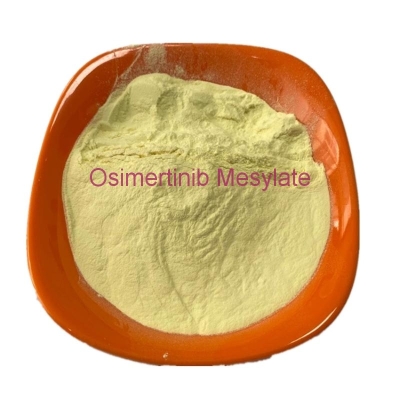-
Categories
-
Pharmaceutical Intermediates
-
Active Pharmaceutical Ingredients
-
Food Additives
- Industrial Coatings
- Agrochemicals
- Dyes and Pigments
- Surfactant
- Flavors and Fragrances
- Chemical Reagents
- Catalyst and Auxiliary
- Natural Products
- Inorganic Chemistry
-
Organic Chemistry
-
Biochemical Engineering
- Analytical Chemistry
- Cosmetic Ingredient
-
Pharmaceutical Intermediates
Promotion
ECHEMI Mall
Wholesale
Weekly Price
Exhibition
News
-
Trade Service
Although AKT over-active is important in tumor progression, clinical trial results for various AKT inhibitors are still not optimal, indicating a need for further understanding of AKT-driven tumor metastasis.
October 12, 2020, Sun Yat-sen University's Cai Junchao and Wu Wei jointly published a research paper entitled "AKT-induced lncRNA VAL promotes EMT-metastasis through development Trim 16-dependent Vimentin" online, based on a study induced by AKT Long non-coding RNA (lncRNA) analysis has identified VAL (waveform protein-related lncRNA, LINC01546) directly induced by AKT/STAT3 signals as an effective pro-transfer molecule and is essential for tumor immersion, metastasis and nerve-free tolerance of active AKT-induced pulmonary adenocarcinoma (LAD).
Interestingly, similar to the active AKT in LAD cells, VAL plays a powerful role in invasive and metastasis by directly binding waveform proteins and competitively eliminating the polysulpheric protein polysulpherine and degradation that depends on Trim16, although VAL cannot induce endoplasm-interstitrinal transformation (EMT).
above, the study provides interesting evidence for the non-EMT-driven non-EMT-dependent LAD transfer mechanism mediated by lncRNA, and shows the great potential of targeting VAL or waveform protein stability as a treatment.
is the most common type of cancer and the leading cause of cancer-related death worldwide.
non-small cell lung cancer (NSCLC) accounts for about 85% of all lung cancer cases, while lung adenocarcinoma (LAD) is a major histological type, accounting for about 50% of NSCLC cases.
estimates suggest that nearly two-thirds of NSCLC patients show evidence of local or distant metastasis at first diagnosis, with a medium survival of about 7 months, while only 1% of metastasis NSCLC patients survive for more than five years after diagnosis.
NSCLC cells in primary tumor lesions usually spread to the lymph nodes, to the side lungs and distant organs such as bones, brain and liver.
, it is important to better understand the potential mechanisms of NSCLC transfer and to identify effective therapeutic targets or prognosmical biomarkers for metastasis NSCLC.
and metastasis of tumors involve complex cascading processes, including the ability to obtain invasive and migration, separation from primary tumors, circulatory flow survival, exodion, adhesion, and implantation at secondary sites.
important is that the cortification-interstate transformation (EMT) is a crucial first step in the transfer cascade process, where the skin cells lose polarization, contact between cells, and obtain fibroblast-like forms.
EMT can often make non-metastasis or low metastasis tumor cells highly invasive.
, however, in the absence of EMT activation, metastasis of primary tumors also occurs frequently.
these studies highlight the fact that the underlying mechanisms of tumor metastasis are far more complex than is known.
AKT signaling path path plays a key role in the development of almost all characteristics of cancer cells.
close relationship between AKT over-active and clinical stage and poor prognostication in patients is well documented in all types of cancer, including NSCLC.
more and more evidence that AKT overactivation promotes tumor invasion and metastasis.
despite the importance of active AKT in a variety of cancers and the great efforts made in developing treatments for AKT, clinical trial results for various AKT inhibitors are still not satisfactory.
long non-coding RNA (lncRNA) is a class of endo-RNA longer than 200 nucleotides with very low protein coding capabilities and has been shown to be largely involved in a variety of basic biological events and diseases.
At the molecular level, lncRNA acts as a bait, binding to proteins and microRNAs, or acting as a stent or guide to regulate protein-protein or protein-DNA interactions, thus regulating gene expression at the level of exogenation, transcription, translation, transcription, and translation.
evidence that lncRNA represents a unique class of primary regulatory factors in the occurrence and development of tumors.
, however, the role of most lncRNA in AKT-driven tumor development and progression remains unclear.
In this study, the expression of lncRNA was analyzed in the active over-expression of AKT's LAD cell line, which has significantly enhanced metastasis ability independent of the EMT process, and identified a intergenerine cytostylin lncRNA VAL (LINC01546, ENSG0000228459), which is activated by AKT through STAT3 transcription activity and pre-correlated with disease progression and LAD adverse pre-reaction.
study further demonstrates that the lncRNA is essential for LAD transfer driven by overactivation of AKT.
interestingly, although VAL cannot induce EMT, VAL enhances the invasion and metastasis of LAD by binding waveform proteins directly and inducing competitive degradation of the waveform protein through its previously unconstited E3 connective enzyme Trim16.
results should provide insight into the LAD transfer process and opportunities for LAD diagnosis and treatment.
.







